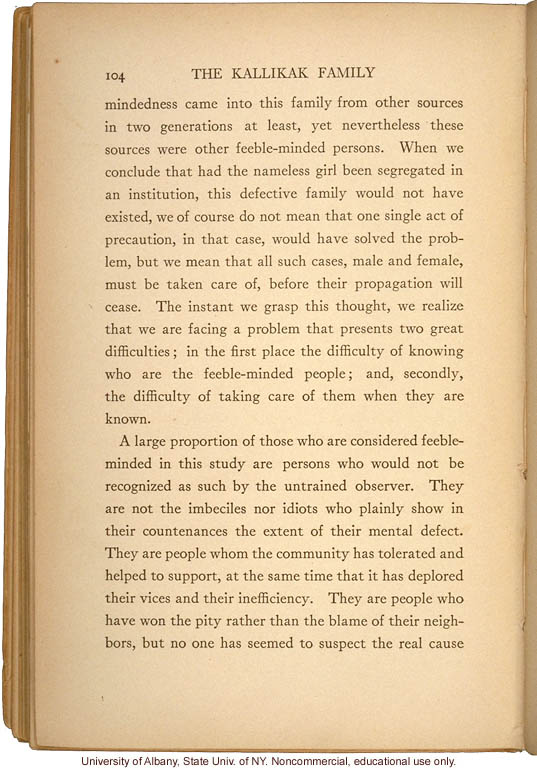104 The Kallikak Family
mindedness came into this family from other sources in two generations at least, yet nevertheless these sources were other feeble-minded persons. When we conclude that had the nameless girl been segregated in an institution, this defective family would not have existed, we of course do not mean that one single act of precaution, in that case, would have solved the problem, but we mean that in all such cases, male and female, must be taken care of, before their propagation will cease. The instant we grasp this thought, we realize that we are facing a problem that presents two great difficulties; in the first place the difficulty of knowing who are the feeble-minded people; and secondly, the difficulty of taking care of them when they are known.
A large proportion of those who are considered feeble-minded in this study are persons who would not be recognized as such by the untrained observer. They are not the imbeciles nor idiots who plainly show in their countenances the extent of their mental defect. They are people whom the community has tolerated and helped to support, at the same time that it has deplored their vices and their inefficiency. They are people who have won the pity rather than the blame of their neighbors, but no one has seemed to suspect the real cause
[end]


